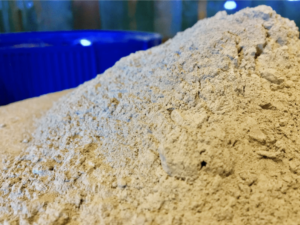
Introduction
Concrete is one of the oldest and most reliable construction materials in the world. Concrete is at the foundation of our civilizations providing everything from the sidewalks in urban, suburban, and rural areas to the enormous concrete dams, like the Hoover Dam.
The purpose of this article is to identify the factors (historical and present day) that explain the title’s question and short and long-term influence on concrete structures.
Renewable energy movement and the loss of durable concrete
In the last few decades, the renewable energy movement has started gaining traction. The ultimate objective of the renewable energy movement, is to reduce the dependency of fossil fuels, including fly ash, for the world-wide infrastructure. With the ever-growing renewable energy movement and the complete phasing-out of coal usage, the concrete industry has, and will continue to experience a significant decrease in durable concrete.
ACI recognizes durable concrete as concrete capable of retaining its original form when placed and exposed to its field environment. This includes maintaining concrete quality over a several decade service-life (ACI, 2008). Of the many secondary cementitious and pozzolanic materials called-out in ACI 201.2R, Guide to Durable Concrete, Class F fly ash is one of the more popularly used materials. Class F fly ash is a by-product of coal combustion often times referred to as coal combustion residue (CCR) (ACI, 2008).
Common coal ashes include Class C and Class F fly ash, which originate from the coal combustion residue generated from coal consumption. These ashes are widely used as a supplementary cementitious material to increase the strength and durability of concrete. ASTM C 618 designates Class C Fly Ash as ash originating from subbituminous and lignite coals. Its composition consists mainly of calcium, alumina, and silica with lower loss on ignition (LOI) than Class F fly ash. ASTM C 618 designates Class F Fly Ash as originating from anthracite and bituminous coals. It consists mainly of alumina and silica and has a higher LOI than Class C fly ash. Class F fly ash also has a lower calcium content than Class C fly ash.
The significance of Class F fly ash for the concrete industry was characterized by its ability to chemically alter, also known as a pozzolanic reaction, the microstructure of concrete to resist the destructive nature of physical and chemical attack. The reduction in coal consumption as result of the renewable energy movement has led to a reduction in CCR and the Class F fly ash that the concrete industry has relied on for decades. The EIA documents the reduced consumption of coal for the different sectors of our national infrastructure.
Despite renewable energy milestones, the apocalyptic impact on the national concrete infrastructure and demand of the construction industry could potentially increase the global carbon footprint more than coal burning. This concrete apocalypse will continue to worsen as the renewable energy movement is adopted globally.
The seeds of the concrete apocalypse began with the introduction of renewable energy initiatives to replace coal power with greener alternatives. Not only did the volume of available CCRs vital for concrete durability decrease, but the quality of CCRs, specifically fly ashes, has also decreased significantly. Despite these reductions in CCR, the demands on the concrete and construction industry continues to increase due to population growth. As a result, concrete is created utilizing inferior fly ash and increased amounts of Portland cement powder.
The absence of fly ash in the concrete mixture ultimately develops a concrete that is susceptible to premature failures, instead of lasting the entire 20 to 40 year service-life. These premature failures include cracking due to alkali-silica reaction, freeze-thaw damage, deicer damage, and other damage mechanisms. This can lead to steel corrosion, spalling, flaking, and a compromise in the structural integrity and overall service-life of the concrete structure. Concrete structures will need to be ripped out sooner.
How do we move forward?
To decrease the carbon footprint and maintain/increase concrete durability, it is necessary for the concrete industry to design long-term service-life concrete utilizing CCR alternatives. These alternatives (as well as other SCMs and Alternative SCMs) include matured technologies like micro silica produced from silicon metal and blast furnace slag produced from the reduction of iron ore to iron. Both alternatives have been shown to increase both concrete strength and durability when utilized as a cement replacement (National Concrete Ready Mix Association).
There are also several emerging additives that result in increased concrete strength and durability. Several liquid additives can be utilized as an addition to or replacement of traditional CCRs and matured technologies. Nano particles, like colloidal silica and carbon nanotubes, effectively manipulate the molecular kinetics of cement hydration to increase the strength, durability, and service-life of concrete (J. B. Belkowitz; J. B. Belkowitz; Land).
Part 2 will go into more detail about the concepts and technologies available and coming out to the market…
By: Mallory A. Westbrook and Jon Belkowitz, PhD, PE

well written
Thank You!
I didn’t know that.
Wonderful views on that!
I didn’t know that.
I was just telling my friend about that.